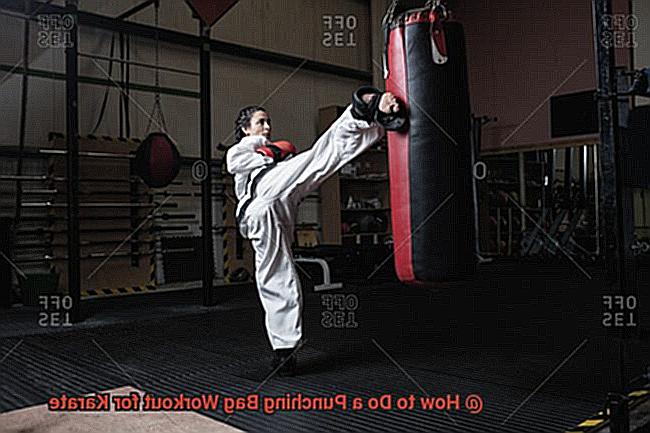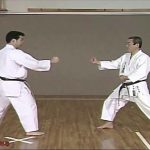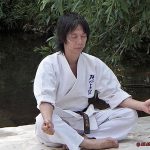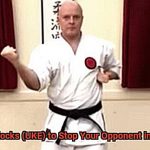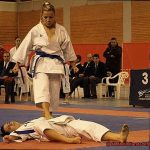Are you ready to take your karate skills to the next level? This dynamic and challenging workout not only builds strength and endurance, but also provides an opportunity to practice various strikes and movements crucial to the martial art.
If you’re new to punching bag workouts, don’t fret – we’ve got your back. In this post, we’ll guide you through the steps of how to do a punching bag workout for karate that’s perfect for beginners and experienced practitioners alike.
First things first: let’s talk equipment. You’ll need a punching bag, gloves and wraps, and comfortable workout clothes.
Once you have those items, we’ll move on to proper technique for striking the bag with precision and power. We’ll emphasize form and positioning so you can get the most out of each punch or kick.
Next up: workouts. We’ll show you various exercises to do on the bag, including high-intensity interval training (HIIT) and circuit training.
These will target multiple muscle groups while providing an overall challenging workout that will leave you feeling invigorated. But wait – there’s more.
We’ll also discuss incorporating kata into your punching bag routine. Kata are choreographed patterns of movement that improve agility, coordination, and muscle memory – all essential elements of karate.
With our expert tips and techniques, you’ll be well on your way to mastering this powerful martial art while getting fit in the process.
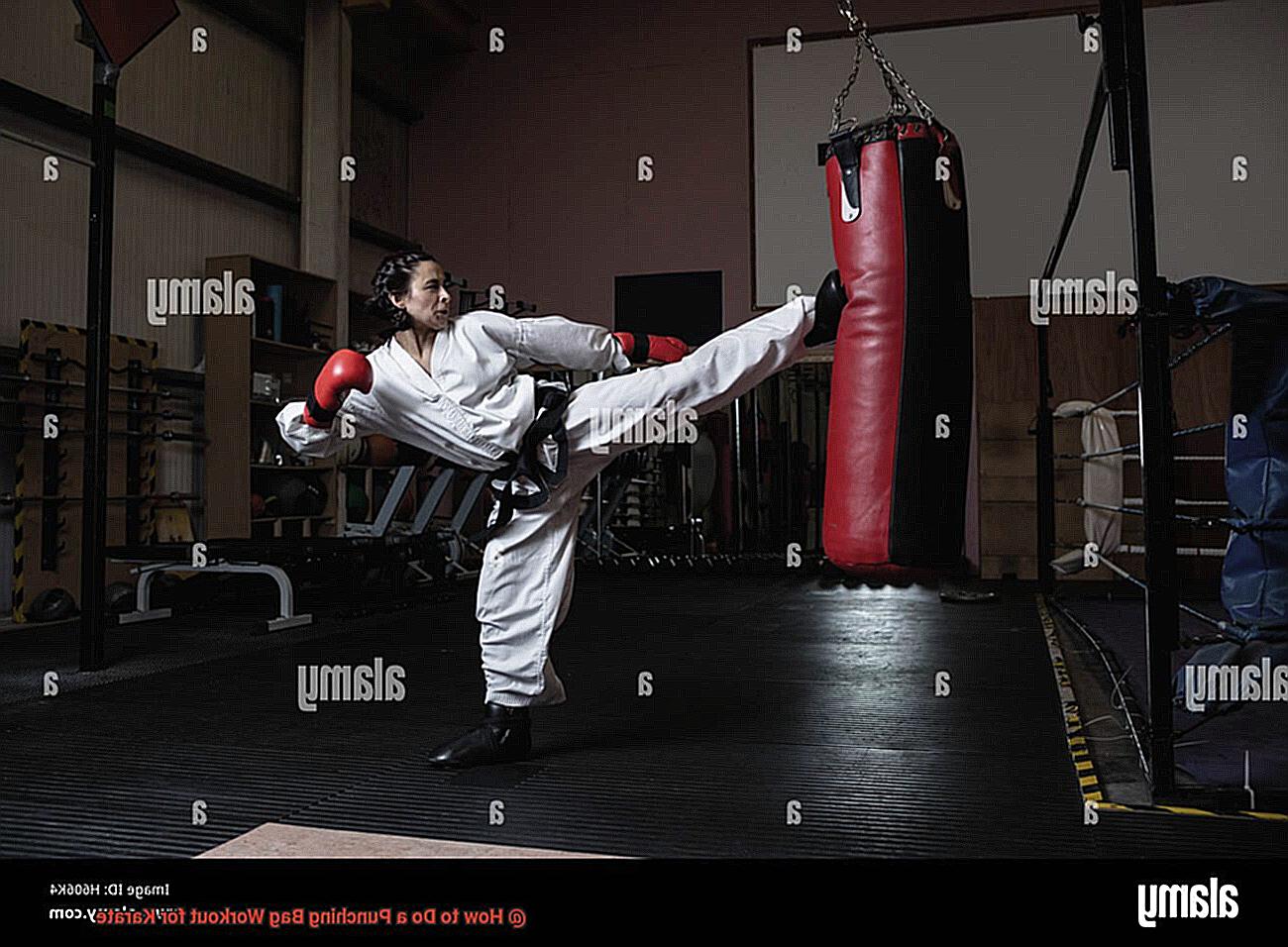
Understanding the Basics of Stance, Form, and Technique
It’s time to take your karate skills to the next level with a punching bag workout.
But before you start, it’s essential to understand the basics of stance, form, and technique to make the most out of your training. First things first – let’s talk about stance.
A proper stance is critical to maintaining balance and generating power with each strike. The basic karate stance is known as the Zenkutsu-dachi, or front stance, which involves stepping one foot forward and bending the front knee.
The back leg remains straight, and the body weight is distributed evenly between both legs. This stable position allows the martial artist to generate maximum power with each strike.
Now, let’s take a closer look at form.
Proper form ensures that each punch and kick is executed with precision and effectiveness.
When striking the punching bag, make sure your fist is tightly closed, with your thumb tucked in and not exposed. As you extend your arm, rotate your shoulder and hip simultaneously to generate maximum force.
Keep your non-striking hand up to protect your face and body from counter-attacks. Finally, let’s dive into technique.
This refers to the specific movements and strategies used in karate to execute punches, kicks, and other strikes. One effective technique for punching bag workouts is the combination of punches and kicks.
This involves throwing a series of punches followed by a kick or several kicks. Another technique is the “power shot,” where you focus on delivering one powerful strike rather than a series of weaker punches or kicks.
These techniques can be tailored to match your skill level and goals. By mastering these essential fundamentals of stance, form, and technique, you can execute strikes with precision, power, and effectiveness during your punching bag workout for karate.
Remember to always warm up properly before starting your workout and challenge yourself with new techniques and combinations to keep improving your martial arts skills.
Preparing Your Body with Warm-Up Exercises
Before you start, it’s essential to prepare your body with warm-up exercises.
Just like a car needs to warm up its engine before hitting the road, your body needs to go through a series of warm-up exercises to prevent injury, enhance performance, and prepare for the upcoming workout.
Karate punching bag workouts involve extensive use of upper body muscles, so it’s crucial to focus on specific warm-up exercises for these muscles.
Begin with light cardio exercises such as jumping jacks or jogging for a few minutes. This will raise your heart rate and warm up your muscles.
Incorporating dynamic stretching exercises that involve movement such as arm circles, leg swings, and lunges is also beneficial as it improves flexibility and range of motion. Once you’ve warmed up your entire body, it’s time to focus on specific upper body muscles such as shoulders, arms, and chest.
To loosen up these muscles before starting the punching bag workout, perform shoulder circles, arm circles and chest stretches. Maintaining proper form during these warm-up exercises is vital to avoid muscle strain or injury.
Core strengthening exercises play a crucial role in stabilizing the body during punching bag workouts. Therefore, it’s important to incorporate planks, sit-ups, and leg raises into your warm-up routine.
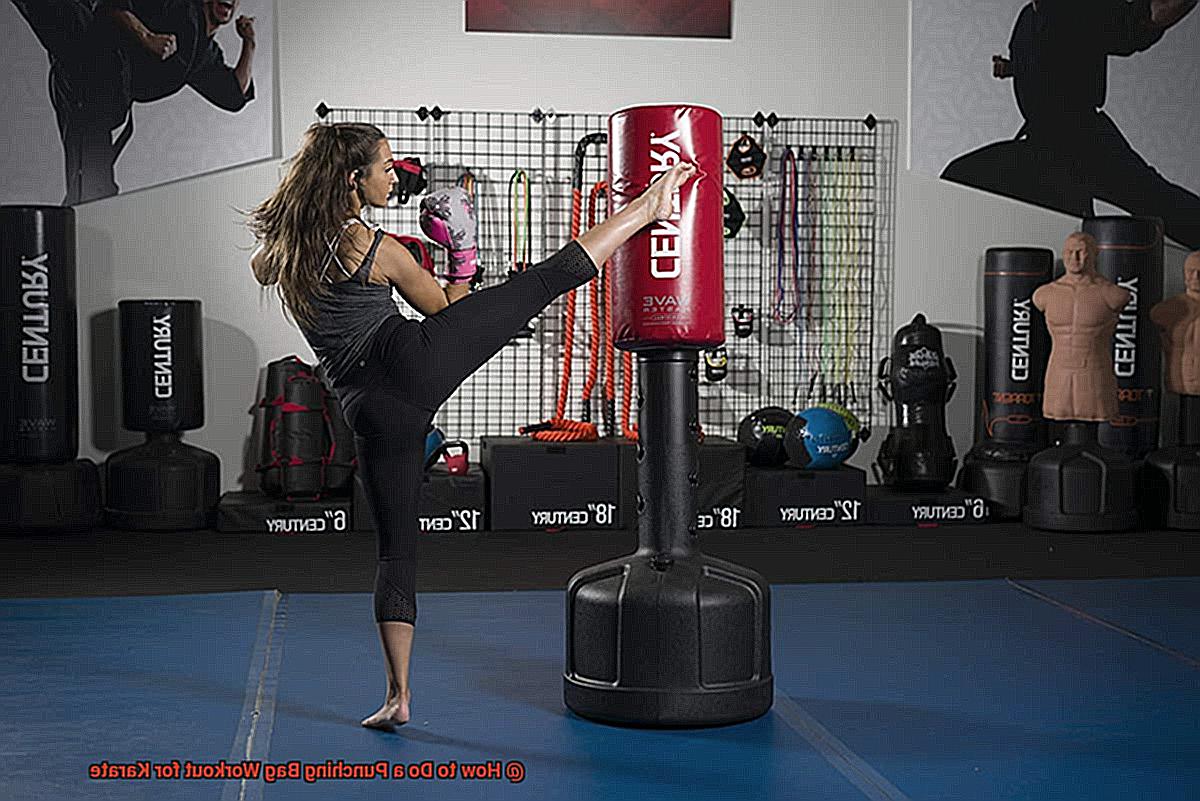
Don’t forget to take breaks and hydrate throughout your warm-up routine as well as during the workout itself. Taking breaks will allow your body to recover and prevent fatigue or injury.
In summary, warming up before a punching bag workout for karate is essential to prevent injury and enhance performance. A proper warm-up routine includes light cardio exercises, dynamic stretching, upper body warm-up exercises, core strengthening exercises, taking breaks and staying hydrated.
Basic Strikes to Start With
You need to lay a strong foundation with the basic strikes first. These strikes are the building blocks of any karate style, and they will help you develop strength, accuracy, and technique.
Let’s take a look at the four basic strikes to start with.
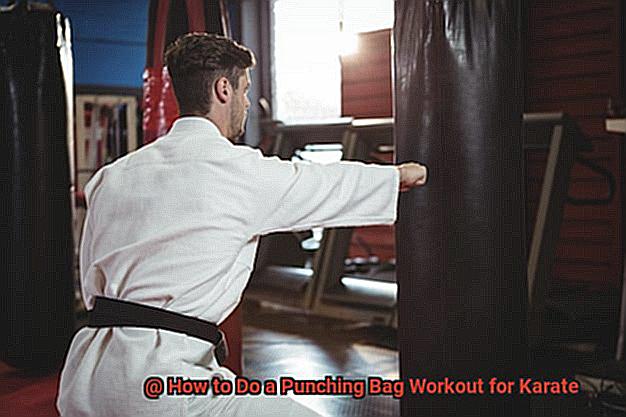
First up is the jab – a quick punch thrown with the lead hand that aims for the opponent’s face or chest.
Next is the cross, a powerful punch thrown with the rear hand that also targets the face or chest. Then there’s the hook – a circular punch thrown with the lead hand that aims for the jaw or temple.
Finally, there’s the uppercut – an upward punch thrown with the rear hand that targets the chin. But don’t rush into these strikes.
It’s crucial to practice them slowly and with proper technique before increasing speed and power. This way, you’ll develop good habits and avoid injury.
It’s like building a solid foundation for a house – you wouldn’t start with the roof or walls without first laying a strong foundation. When practicing on a punching bag, remember that you’re simulating a real opponent.
So, make sure to practice your strikes as if you were in a real fight. This will help you develop accuracy and timing, two critical skills in karate.
Slow and steady wins the race. Take your time and focus on proper form before trying to increase the speed and power of your strikes.
Just like learning how to ride a bike, you wouldn’t try to ride without training wheels on your first attempt. In summary, starting with basic strikes is essential for developing proper technique and strength in karate.
Advanced Techniques to Incorporate
You’ve mastered the basics of a punching bag workout for karate, and now it’s time to level up your skills with some advanced techniques. These techniques will challenge your body in new ways, improve your speed, power, accuracy, and agility.
First up is angle punching – an advanced technique that trains your body to punch from different positions. This technique involves hitting the punching bag at different angles, like a ninja warrior striking from unexpected directions.
Start by hitting the bag from the front, then move to the side and hit it from an angle. Once you’re comfortable with that, try hitting the bag from behind or at an angle while moving forward or backward.
Next, let’s talk about combination punches – a technique that involves using a series of punches in quick succession. This technique improves your hand speed and accuracy, allowing you to throw more punches in a shorter amount of time.
Start with simple combinations like a jab-cross or hook-uppercut and gradually add more punches as you become more comfortable. Imagine unleashing a flurry of blows that catches your opponent off guard.
Footwork drills are another essential part of any karate workout, and incorporating them into your punching bag routine can improve your agility, balance, and coordination. Start with basic movements like shuffling, stepping forward and backward, and pivoting before moving on to more complex footwork drills like weaving or circling around the punching bag.
These drills will help you move around the ring efficiently while avoiding getting hit. Lastly, let’s talk about power punches – a technique that involves using your entire body to generate maximum force behind each punch.
This technique is like channeling all the energy in the universe through your fist for a devastating strike that takes down your opponent in one hit. Focus on one punch at a time, such as a cross or hook, and use your entire body when throwing it.
Rotate your hips and shoulders and drive your weight forward with each strike. Incorporating these advanced techniques into your punching bag workout will elevate your karate skills to new heights.
Maintaining Proper Form
Maintaining proper form during a punching bag workout is like laying a solid foundation for a skyscraper.
Without it, your strikes may fall short and lead to injury. To avoid this, start by establishing a stable stance.
Think of yourself as a strong tree with your feet shoulder-width apart and knees slightly bent, providing balance and support for your strikes. Once you have rooted yourself, focus on aligning your body towards the bag.
Keep your hips and shoulders facing directly towards the target and clench your fists at chin level with your elbows tucked in close to your body. Imagine yourself as an impenetrable fortress, ready to defend against any attack.
As you punch the bag, extend your arm fully while keeping your wrist straight to prevent injury. Visualize yourself as a skilled swordsman, slicing through the air with precision and power.
And don’t forget to breathe. Inhale deeply before striking, then exhale forcefully upon impact, like a dragon breathing fire.
Remember that practice makes perfect. Just like earning a black belt takes years of dedication and training, perfecting your form requires patience and commitment.
Take the time to adjust your stance and alignment before each strike, and focus on your breathing to unleash the full power of your strikes.
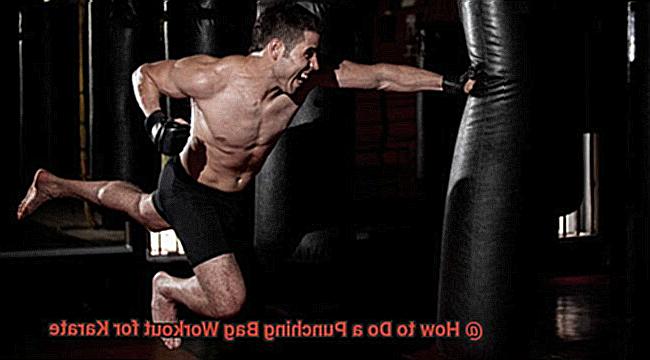
In conclusion, maintaining proper form during a punching bag workout is crucial for karate practitioners looking to maximize their effectiveness while minimizing the risk of injury.
Varying Your Routine and Challenging Yourself
To get the most out of your punching bag workout, it’s crucial to keep things interesting and continue to progress by mixing up your routine.
Doing the same exercises every day can lead to boredom and a plateau in your skill development. So how can you keep things fresh and take your karate abilities to the next level?
One way is by adjusting the intensity of your workout. Imagine yourself as a river flowing downstream – sometimes slow and steady, other times quick and powerful.
You can change the speed, power, and frequency of your punches and kicks to keep your body guessing. Experiment with high-intensity workouts one day and low-intensity workouts the next.
By doing so, you’ll challenge yourself in new ways and improve your overall technique. In addition, be open to trying out new exercises.
Think of yourself as a chef experimenting with different ingredients – adding a pinch of this or a dash of that until you find the perfect blend. Incorporate different types of punches, kicks, and strikes into your workout routine.
Try out new combinations of moves to keep things fresh and exciting. By challenging yourself with new exercises, you’ll develop new skills and take your karate abilities to the next level.
Finally, it’s important to set achievable goals for yourself and track your progress. Imagine yourself as an explorer charting new territory – with each step taken, you’re closer to reaching your destination.
Set goals for yourself, whether it’s increasing the speed of your punches or mastering a new move. Keep track of your progress over time so that you can see how far you’ve come.
SIW67lRsl4U” >
Conclusion
To sum up, a punching bag workout for karate is a fantastic way to enhance your martial arts skills and get in shape.
Whether you’re new to the sport or an experienced practitioner, this article has provided you with step-by-step guidance to ensure proper technique and form. From mastering the fundamentals of stance, form, and technique to incorporating advanced moves like angle punching and power punches, there’s something for everyone in this workout.
But before you begin, it’s crucial to warm up adequately to avoid injury and maximize performance. Basic strikes such as jab, cross, hook, and uppercut are the building blocks that help develop strength, accuracy, and technique.
By mixing up your routine and setting new goals for yourself regularly, you can take your karate abilities to the next level.
Remember always to maintain proper form during each strike by establishing a stable stance, aligning your body towards the target, clenching your fists at chin level with elbows tucked in close to your body.

